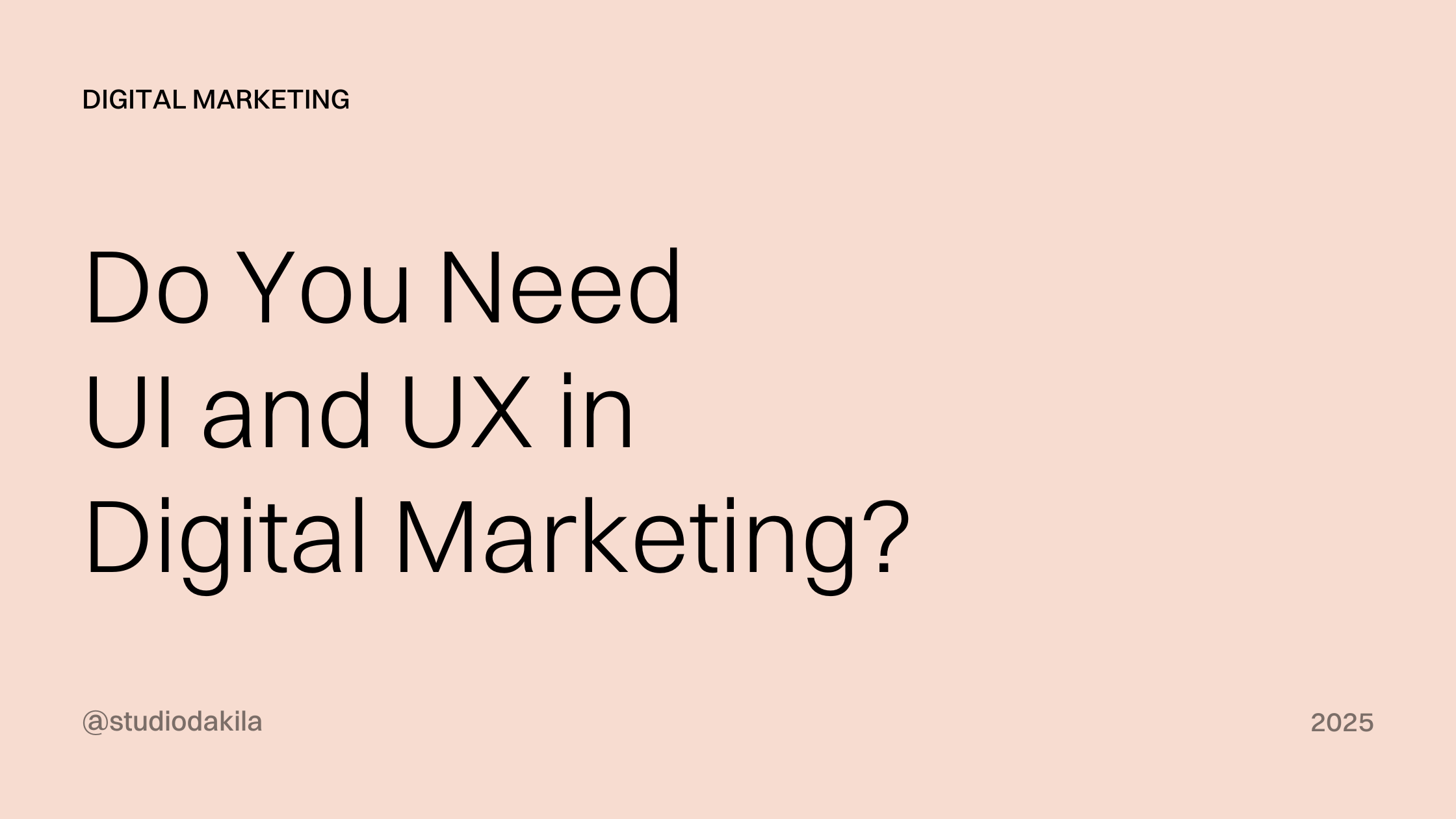User Interface (UI) and User Experience (UX) have evolved from technical design considerations to critical strategic elements that directly impact marketing outcomes. When seamlessly integrated with digital marketing strategies, they create experiences that not only attract visitors but convert them into loyal customers. This integration has become essential for businesses looking to thrive in today’s competitive digital landscape.
As a business owner or marketing professional, you may be wondering if investing in UI UX design is truly necessary for your digital marketing efforts. The short answer is a resounding yes—and understanding why could transform your approach to connecting with your audience.
Understanding the UI UX and Digital Marketing Relationship

Before diving deeper, let’s clarify what we mean by UI and UX and how they relate to digital marketing:
- User Interface (UI) refers to the visual elements users interact with on your digital platforms—buttons, menus, icons, and overall visual design.
- User Experience (UX) encompasses the entire journey a user has with your digital product or service, including how they feel during and after interactions.
- Digital Marketing involves promoting products or services through digital channels to reach and engage target audiences.
When these three elements work in harmony, they create a powerful foundation for digital success.
Consider this: even the most brilliant marketing campaign will fall flat if it leads users to a confusing website or frustrating mobile app. Conversely, an intuitive, beautifully designed interface loses value if your digital marketing strategy fails to bring the right audience to experience it.
Why Is User Experience Design Important in the Marketing Ecosystem?
User experience design has transcended being just a technical requirement to become a critical business differentiator. But why is user experience design important specifically within the marketing context?
1. First Impressions Matter More Than Ever
Research shows that users form opinions about your website within 50 milliseconds of landing on it. This snap judgment often determines whether they’ll stay or leave. A thoughtfully designed UI creates positive first impressions that keep potential customers engaged with your marketing messages.
A strategic boutique agency understands this delicate balance, focusing on creating user interfaces that align with your brand promise while facilitating meaningful engagement with your marketing content.

2. Reduced Friction Leads to Higher Conversion Rates
Every additional step, confusing form field, or moment of hesitation in your user journey can result in lost conversions. UX design identifies and eliminates these friction points, creating smooth pathways from marketing touchpoints to conversion actions.
For example, an e-commerce business that optimized its checkout process through UX improvements saw a 35% increase in completion rates—directly translating marketing efforts into revenue.
3. Enhanced Data Collection for Marketing Insights
Well-designed user interfaces and experiences facilitate better data collection. When users enjoy interacting with your digital platforms, they’re more likely to complete forms, participate in surveys, and engage with interactive content that provides valuable marketing insights.
A creative agency with integrated UI/UX and marketing capabilities can help you design data collection touchpoints that feel natural and valuable to users rather than intrusive or burdensome.
4. Consistency Across the Customer Journey
UI and UX design ensures consistency between your marketing promises and actual customer experiences. This alignment builds trust and credibility with your audience—essential components for long-term marketing success.
When a user clicks on a social media ad promising an “easy 3-step signup” only to encounter a complicated 10-field form, the disconnect damages brand perception. Integrated UI and UX with digital marketing strategies prevent these harmful inconsistencies.
The Undeniable Business Impact of Integrated UI UX and Digital Marketing
The business case for integrating UI and UX with digital marketing becomes even more compelling when examining concrete outcomes:
Measurable ROI on Design Investments
Forrester Research found that every dollar invested in UX brings 100 dollars in return—an ROI of 9,900%. This remarkable return materializes through:
- Increased conversion rates
- Higher customer retention
- Reduced support costs
- Greater customer lifetime value
These metrics directly impact the effectiveness of your digital marketing spend, making UI and UX investments a strategic marketing decision, not just a design consideration.

Competitive Differentiation in Crowded Markets
In markets where product features and pricing have become increasingly similar, the user experience you provide becomes a powerful differentiator.
Consider how companies like Apple have built enormous brand value not primarily through technical specifications but through exceptional user experiences that become central to their marketing narratives.
Reduced Customer Acquisition Costs
Poor user experiences lead to higher bounce rates and abandoned conversions, essentially wasting your marketing spend. By contrast, intuitive experiences that align with user expectations maximize the value of every marketing dollar by increasing conversion efficiency.
A SaaS company that invested in UX improvements saw their customer acquisition costs decrease by 28% while maintaining the same marketing budget—simply because more visitors completed the signup process.
How Digital Marketing and UX Design Work Together?
Let’s explore how this integration manifests in practical marketing contexts:
Content Marketing Enhanced by Strategic UX
Content marketing becomes significantly more effective when UX design principles inform content creation and presentation. This includes:
- Strategic formatting that improves readability
- Thoughtful placement of calls to action
- Intuitive navigation between related content pieces
- Mobile optimization for content consumption on any device

SEO Performance Amplified by UI and UX Considerations
Google has explicitly stated that user experience is a ranking factor. Key UX elements that impact SEO include:
- Page load speed
- Mobile-friendliness
- Intuitive navigation
- Content accessibility
- Low bounce rates and longer time on page
When your UI and UX and SEO strategies align, they create a virtuous cycle: better rankings bring more traffic, while improved user experiences lead to engagement signals that further enhance rankings.
Paid Advertising Effectiveness Multiplied
The effectiveness of paid digital advertising depends heavily on post-click experiences. Even the most compelling ad will fall short if it leads to a disconnected landing page experience.
Integrated UI UX and digital marketing strategies ensure that:
- Landing pages fulfill the promises made in advertisements
- User journeys from ad to conversion are seamless and intuitive
- Visual design elements maintain consistency between ads and destinations
- Conversion points are strategically designed to maximize completion
A digital marketing and UX design partnership enables cohesive experiences that maximize advertising ROI by turning clicks into customers.
Social Media Engagement Deepened
Social media marketing extends beyond creating compelling posts—it involves designing meaningful interactions across platforms and owned digital properties. UX considerations for social media marketing include:
- Intuitive social sharing functionality
- Seamless transitions between social platforms and your website
- Consistent brand experiences across all touchpoints
- Mobile-optimized experiences for social media users
When users encounter thoughtfully designed experiences across these touchpoints, their engagement with your brand deepens, extending the impact of your social media marketing efforts.

Implementing an Integrated Approach: Strategies for Success
How can businesses effectively integrate UI and UX with their digital marketing efforts? Consider these actionable strategies:
1. Start with User Research that Serves Both Disciplines
Before launching new marketing initiatives or redesigning digital properties, conduct user research that informs both marketing messaging and experience design:
- User interviews provide insights into customer language for marketing copy and pain points for UX improvements
- Usability testing reveals how effectively marketing messages translate into user actions
- Customer journey mapping identifies critical touchpoints where marketing and UX must align
This shared research foundation ensures that marketing strategies and UX designs work from the same understanding of user needs and behaviors.
2. Establish Cross-Functional Collaboration
Break down silos between marketing and design teams by:
- Including UX designers in marketing strategy sessions
- Involving marketers in design reviews and usability testing
- Creating shared metrics that measure both marketing and UX success
- Developing common user personas that guide both disciplines
3. Design Marketing-Specific UX Elements
Certain UX elements directly support marketing objectives and deserve special attention:
- Lead generation forms optimized for completion while collecting valuable data
- Content presentation frameworks that facilitate both engagement and conversion
- Subscription and notification interfaces that balance user control with marketing needs
- Personalization experiences that enhance relevance without feeling intrusive
When these elements are designed with both UX best practices and marketing objectives in mind, they become powerful assets in your digital strategy.
4. Implement Measurement Systems that Connect UX to Marketing Outcomes
Establish analytics frameworks that demonstrate the relationship between UX improvements and marketing results:
- Track how UX changes impact conversion rates across marketing channels
- Measure reduced bounce rates from advertising campaigns after UX improvements
- Analyze how content engagement metrics change with UX enhancements
- Calculate the ROI of UX investments in terms of marketing efficiency
These measurement systems help build organizational support for ongoing UX investments by demonstrating their marketing impact.
How to Choose the Right Partner for Integrated UI UX and Digital Marketing
Not all agencies are equipped to deliver the strategic integration of UI and UX with digital marketing. When selecting a partner, look for:
Expertise Across Both Disciplines
A true partner should demonstrate deep expertise in both UI UX design and digital marketing strategy—not just surface-level capabilities in either area. This expertise should be evident in:
- Case studies showing measurable marketing results from integrated approaches
- Team members with credentials and experience in both disciplines
- Thought leadership that addresses the intersection of these fields
- A demonstrated understanding of how these disciplines reinforce each other

Strategic Focus Before Implementation
Prioritize partners who emphasize strategic foundations before jumping to tactical execution. A quality boutique agency will:
- Begin with understanding your business objectives and user needs
- Develop comprehensive strategies that align UX design with marketing goals
- Create measurement frameworks that demonstrate the impact of integrated approaches
- Recommend strategic priorities based on potential business impact
This strategic emphasis ensures that all tactical executions serve your broader business objectives.
Collaborative Methodology
The right partner will work as an extension of your team, not just an external vendor. Look for agencies that:
- Involve your team in key strategic discussions and decision points
- Educate your organization about the value of integrated approaches
- Transfer knowledge that builds internal capabilities over time
- Demonstrate flexibility in adapting to your organization’s unique context
This collaborative approach creates lasting value beyond the immediate project outcomes.
The Future Belongs to Integrated Experiences
The integration of UI and UX with digital marketing has evolved from advantageous to essential. Businesses that treat these disciplines as separate concerns will find themselves at a disadvantage against competitors offering cohesive, thoughtfully designed user experiences that align perfectly with their marketing promises.
Whether you’re working with a creative agency, a boutique agency, or building in-house capabilities, the message is clear: UI UX and digital marketing are most powerful when they work together. This integration creates digital experiences that not only attract and convert customers but build lasting relationships that drive sustainable business growth.
When you invest in this integrated approach, you position your business to deliver experiences that users value, share, and return to—creating marketing advantages that extend far beyond any single campaign or initiative.
Key Takeaways:
- The strategic integration of UI and UX with digital marketing creates a powerful foundation for digital success, directly impacting conversion rates, customer retention, and acquisition costs.
- User experience has evolved from a technical consideration to a business differentiator, with research showing that every dollar invested in UX can generate up to 100 dollars in return through improved marketing effectiveness.
- Businesses that align their UI UX and digital marketing strategies create cohesive customer journeys that fulfill marketing promises, build trust, and establish a sustainable competitive advantage in increasingly crowded markets.
Ready to Transform Your Digital Experience?
Connect with our team to explore how strategic UI UX integration can enhance your digital marketing effectiveness and drive measurable business results. We’ll work collaboratively to identify specific opportunities within your unique business context.
Frequently Asked Questions
User experience design directly impacts conversion rates and engagement metrics that determine marketing success. When users enjoy interacting with your digital touchpoints, they’re more likely to complete desired actions and develop lasting relationships with your brand.
Yes, even small businesses benefit from this integration as it leads to more efficient marketing spend and higher conversion rates.
Track changes in conversion rates, time on page, bounce rates, and customer acquisition costs before and after UX improvements. These metrics provide clear evidence of how enhanced user experiences translate to marketing performance.

